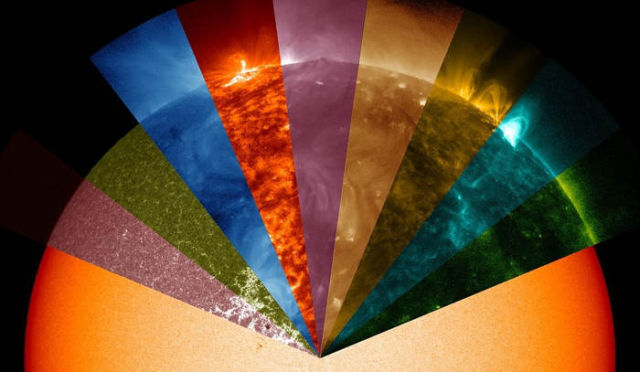NASA has released a stunning timelapse video showing the sun over the course of a year.
This video shows the Sun for almost an entire year (from Jan. 1, 2015, to Jan. 28, 2016), in a timelapse sequence. The images in the animation were captured by NASA’s Solar Dynamics Observatory spacecraft.
Above: SDO can see a wide range of wavelengths, some that are invisible to the naked eye. It converts the wavelengths into an image humans can see.
SDO‘s Atmospheric Imaging Assembly (AIA) captures a shot of the sun every 12 seconds in 10 different wavelengths. The images shown here are based on a wavelength of 171 angstroms, which is in the extreme ultraviolet range and shows solar material at around 600,000 kelvins (about 1,079,540 degrees F). In this wavelength it is easy to see the sun’s 25-day rotation.
It’s always shining, always ablaze with light and energy that drive weather, biology and more. In addition to keeping life alive on Earth, the sun also sends out a constant flow of particles called the solar wind, and it occasionally erupts with giant clouds of solar material, called coronal mass ejections, or explosions of X-rays called solar flares. These events can rattle our space environment out to the very edges of our solar system. In space, NASA’s Solar Dynamics Observatory, or SDO, keeps an eye on our nearest star 24/7.






Leave A Comment